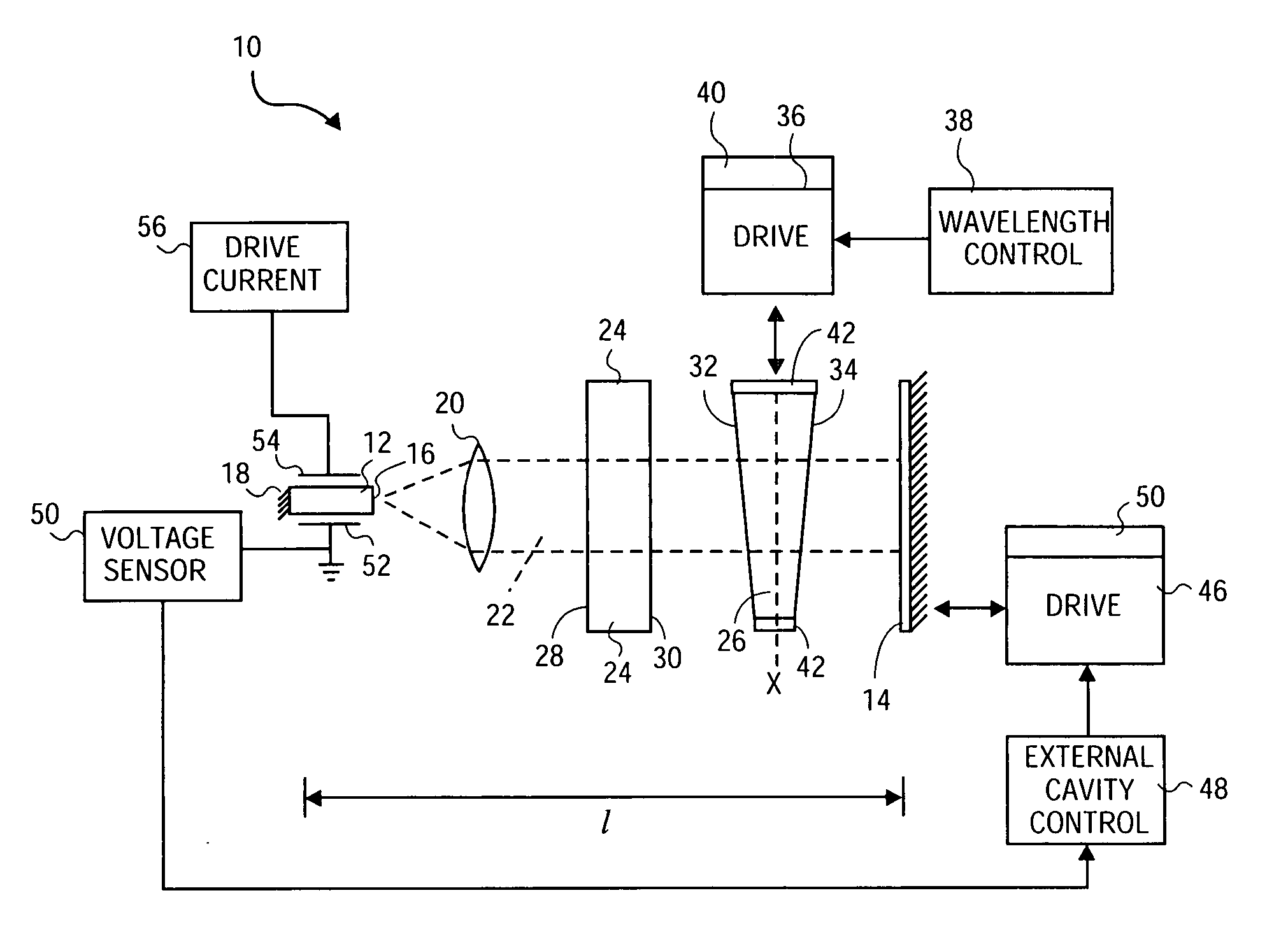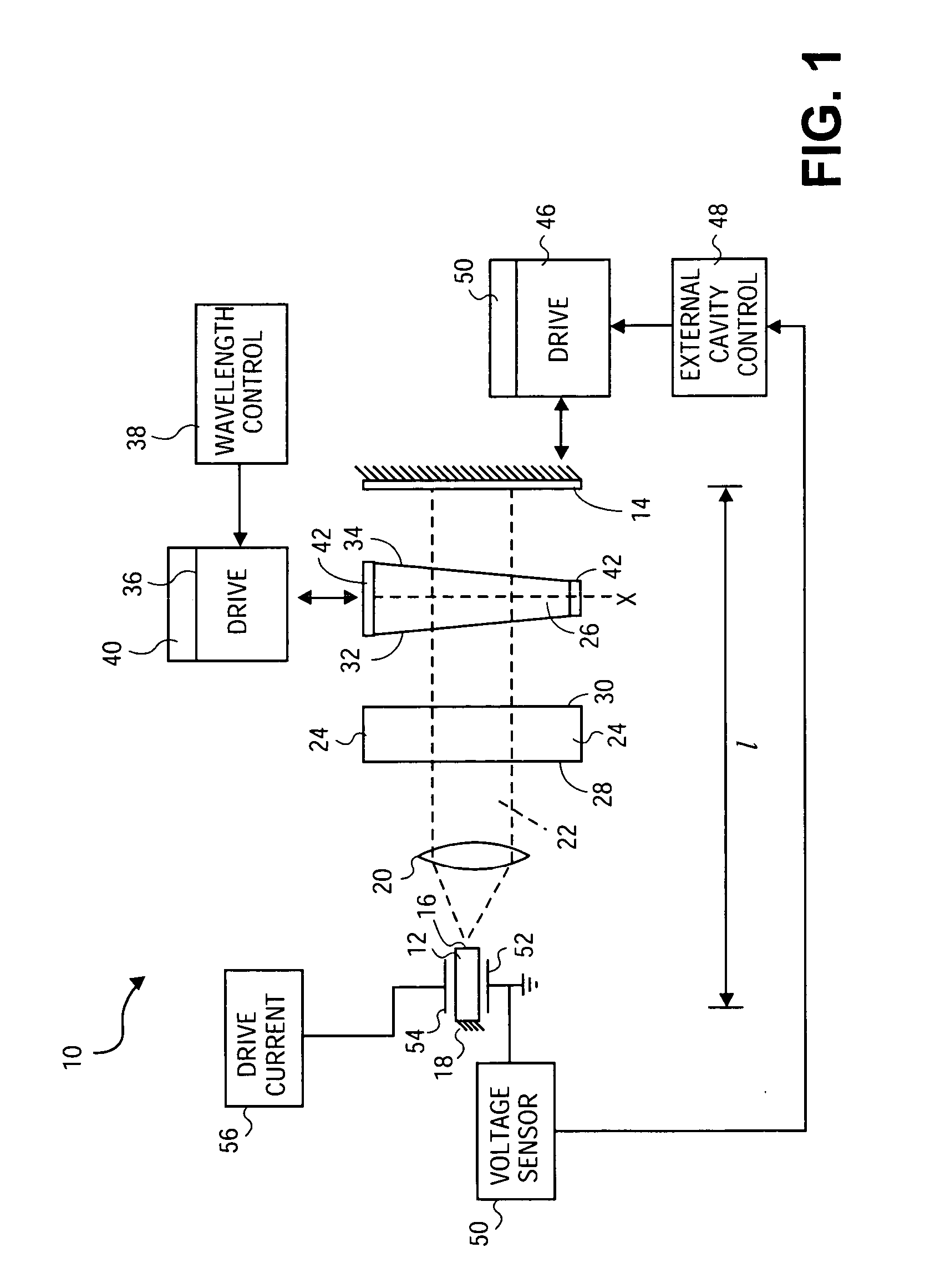External cavity laser method and apparatus with orthogonal tuning of laser wavelength and cavity optical path length
a laser wavelength and laser wavelength technology, applied in the field of external cavity laser methods and apparatuses with orthogonal tuning of laser wavelength and cavity optical path length, can solve the problems of inability to precisely tune the wavelength of operation within the interval of a mode hop, difficult implementation of this design, and transmission errors in modulated data streams, etc., to achieve minimal effect, minimize coupling, and minimize the effect of the passband of the tuning filter
- Summary
- Abstract
- Description
- Claims
- Application Information
AI Technical Summary
Benefits of technology
Problems solved by technology
Method used
Image
Examples
Embodiment Construction
[0027] Referring more specifically to the drawings, for illustrative purposes the present invention is embodied in the apparatus and method shown in FIG. I through FIG. 6. It will be appreciated that the apparatus may vary as to configuration and as to details of the parts, and that the method may vary as to details and the order of events, without departing from the basic concepts as disclosed herein. The invention is disclosed primarily in terms of use with an external cavity laser. However, it will be readily apparent to those skilled in the art that the invention may be used with other types of lasers and optical systems. It also should be understood that the terminology used herein is for the purpose of describing particular embodiments only, and is not intended to be limiting.
[0028] A fundamental underlying physical principle of steady state laser operation is that the electric field of the optical wave inside the cavity reproduce itself after traversing a round trip in the c...
PUM
| Property | Measurement | Unit |
|---|---|---|
| temperature | aaaaa | aaaaa |
| wavelength | aaaaa | aaaaa |
| wavelength | aaaaa | aaaaa |
Abstract
Description
Claims
Application Information
 Login to View More
Login to View More - R&D
- Intellectual Property
- Life Sciences
- Materials
- Tech Scout
- Unparalleled Data Quality
- Higher Quality Content
- 60% Fewer Hallucinations
Browse by: Latest US Patents, China's latest patents, Technical Efficacy Thesaurus, Application Domain, Technology Topic, Popular Technical Reports.
© 2025 PatSnap. All rights reserved.Legal|Privacy policy|Modern Slavery Act Transparency Statement|Sitemap|About US| Contact US: help@patsnap.com



